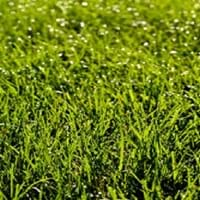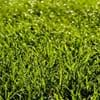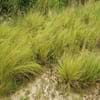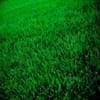Life Span
Perennial
Perennial
Type
Grass
Flowering Plants
Origin
Southern Asia, India
Italy, Southern Europe, western Balkans
Types
Not Available
not available
Number of Varieties
Not Available
Habitat
Warmer regions
Islands, Not Available
USDA Hardiness Zone
6-11
7-10
AHS Heat Zone
11- 6
7 - 4
Sunset Zone
H1, H2, 5, 6, 7, 8, 9, 10, 12, 13, 14, 15, 16, 17, 18, 19, 20, 21, 22, 23, 24
21,22
Habit
Mat-forming
Upright/Erect
Flower Color
Not Available
Lavender, Light Blue, White
Flower Color Modifier
Bicolor
Bicolor
Fruit Color
Not Available
Non Fruiting Plant
Leaf Color in Spring
Gray Green, Dark Green
Green, Light Green
Leaf Color in Summer
Light Green
Green, Light Green
Leaf Color in Fall
Gray Green, Dark Green
Green, Light Green
Leaf Color in Winter
Gray Green, Dark Green, Tan
Light Green
Leaf Shape
Arrowhead
Compound
Plant Season
Spring, Summer, Fall, Winter
Summer, Fall
Sunlight
Full Sun
Full Sun, Partial Sun
Type of Soil
Clay, Loam, Sand
Loam
The pH of Soil
Acidic, Neutral, Alkaline
Acidic, Neutral
Soil Drainage
Well drained
Average
Bloom Time
Indeterminate
Early Summer, Summer, Late Summer
Tolerances
Pollution, Salt, Soil Compaction
Heat Tolerance
Where to Plant?
Container, Ground
Ground, Pot
How to Plant?
Seedlings
From bulbs, Seedlings, Stem Planting
Plant Maintenance
Medium
Low
Watering Requirements
Average Water Needs
Average Water Needs, Do Not over Water, Never Over-water, Requires regular watering
In Summer
Lots of watering
Lots of watering
In Spring
Moderate
Moderate
In Winter
Average Water
Average Water
Soil pH
Acidic, Neutral, Alkaline
Acidic, Neutral
Soil Type
Clay, Loam, Sand
Loam
Soil Drainage Capacity
Well drained
Average
Sun Exposure
Full Sun
Full Sun, Partial Sun
Pruning
No pruning needed
Remove damaged leaves, Remove dead branches, Remove dead leaves, Remove dead or diseased plant parts
Fertilizers
Apply 3-1-2 or 4-1-2 ratio, Nitrogen
fertilize every 2-3 weeks while growing, fertilize in growing season
Pests and Diseases
Red blotch
fungus
Plant Tolerance
Pollution, Salt, Soil Compaction
Drought, Heat Tolerance
Flowers
Insignificant
Showy
Flower Petal Number
Single
Single
Showy Foliage
No
Not Available
Foliage Texture
Fine
Not Available
Foliage Sheen
Matte
Not Available
Attracts
Flying insects, Insects
Birds, Insects
Allergy
breathing problems, Eye irritation, Hives, Itchiness, Runny nose, sneezing, Throat itching, Whooping Cough
Toxic
Aesthetic Uses
Ground Cover, Landscape Designing
Beautification, Landscape Designing, Showy Purposes
Beauty Benefits
Skin irritation, Skin Problems
Not Available
Edible Uses
Insignificant
No
Environmental Uses
Air purification, Prevent Soil Erosion, soil stabilisation
Air purification
Medicinal Uses
Cures constipation, Cures foot fissures, Digestive disorders, Eliminate toxins, Fatigue, Halitosis, Improves Breast milk production, Increase red blood cells, Insomnia
Asthma, Cough, Unknown
Part of Plant Used
Leaves, Stem
Flowers, Leaves
Other Uses
Animal Feed, Cattle Fodder, Used as Ornamental plant
Decoration Purposes, Showy Purposes, Used as Ornamental plant
Used As Indoor Plant
Insignificant
Yes
Used As Outdoor Plant
Yes
Yes
Garden Design
Lawns and Turf
Mixed Border, Wildflower
Botanical Name
CYNODON dactylon
CAMPANULA pyramidalis
Common Name
Bermuda Grass
Chimney Bellflower
In Hindi
बरमूडा घास
Chimney Bellflower
In German
Bermuda Gras
Schornstein Glockenblume
In French
l'herbe des Bermudes
cheminée Bellflower
In Spanish
Grama
Chimenea Bellflower
In Greek
Αγριάδα
καμινάδα καμπανούλα
In Portuguese
grama Bermuda
chaminé Bellflower
In Polish
Trawa Bermuda
komin Bellflower
In Latin
Bermuda Grass
caminorum purgatores Bellflower
Phylum
Magnoliophyta
Tracheophyta
Class
Liliopsida
Magnoliopsida
Order
Cyperales
Asterales
Family
Poaceae
Campanulaceae
Genus
Cynodon Rich
Campanula
Clade
Angiosperms, Commelinids
Angiosperms, Asterids, Eudicots
Tribe
Chlorideae
Not Available
Subfamily
Chloridoideae
Not Available
Number of Species
Not Available
Properties of Bermuda Grass and Chimney Bellflower
Wondering what are the properties of Bermuda Grass and Chimney Bellflower? We provide you with everything About Bermuda Grass and Chimney Bellflower. Bermuda Grass doesn't have thorns and Chimney Bellflower doesn't have thorns. Also Bermuda Grass does not have fragrant flowers. Bermuda Grass has allergic reactions like breathing problems, Eye irritation, Hives, Itchiness, Runny nose, sneezing, Throat itching and Whooping Cough and Chimney Bellflower has allergic reactions like breathing problems, Eye irritation, Hives, Itchiness, Runny nose, sneezing, Throat itching and Whooping Cough. Compare all the properties and characteristics of these two plants. Find out which of these plant can be used as indoor plant. If you are interested to decorate your house and garden, find out aesthetic uses, compare them and select the plant which will beautify your surrounding. Along with beautification, try comparing medicinal and edible uses of Bermuda Grass and Chimney Bellflower and you can choose the plant having best and most benefits.
Season and Care of Bermuda Grass and Chimney Bellflower
Season and care of Bermuda Grass and Chimney Bellflower is important to know. While considering everything about Bermuda Grass and Chimney Bellflower Care, growing season is an essential factor. Bermuda Grass season is Spring, Summer, Fall and Winter and Chimney Bellflower season is Spring, Summer, Fall and Winter. The type of soil for Bermuda Grass is Clay, Loam, Sand and for Chimney Bellflower is Loam while the PH of soil for Bermuda Grass is Acidic, Neutral, Alkaline and for Chimney Bellflower is Acidic, Neutral.
Bermuda Grass and Chimney Bellflower Physical Information
Bermuda Grass and Chimney Bellflower physical information is very important for comparison. Bermuda Grass height is 40.00 cm and width 302.00 cm whereas Chimney Bellflower height is 120.00 cm and width 45.70 cm. The color specification of Bermuda Grass and Chimney Bellflower are as follows:
Bermuda Grass flower color: Not Available
Bermuda Grass leaf color: Gray Green and Dark Green
Chimney Bellflower flower color: Lavender, Light Blue and White
- Chimney Bellflower leaf color: Green and Light Green
Care of Bermuda Grass and Chimney Bellflower
Care of Bermuda Grass and Chimney Bellflower include pruning, fertilizers, watering etc. Bermuda Grass pruning is done No pruning needed and Chimney Bellflower pruning is done Remove damaged leaves, Remove dead branches, Remove dead leaves and Remove dead or diseased plant parts. In summer Bermuda Grass needs Lots of watering and in winter, it needs Average Water. Whereas, in summer Chimney Bellflower needs Lots of watering and in winter, it needs Average Water.





